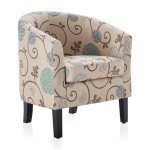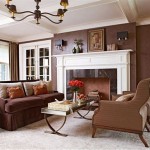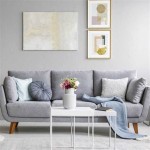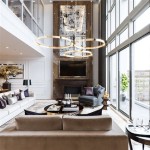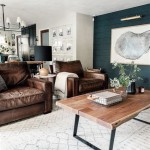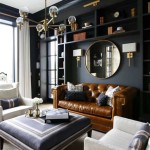Living Room Home Decorating Ideas: A Comprehensive Guide
The living room often serves as the heart of a home, a central gathering space for relaxation, entertainment, and socializing. Consequently, its design and decor are crucial in establishing the overall ambiance and reflecting the homeowner's personal style. A well-decorated living room can be inviting, comfortable, and aesthetically pleasing, enhancing the quality of life for residents and making a positive impression on guests. There are several considerations to make when embarking on a living room decorating project, ranging from spatial planning and color palettes to furniture selection and accessorizing. This article provides a comprehensive guide to living room home decorating ideas, offering practical insights and inspiration for transforming a living space into a haven of comfort and style.
Prioritizing Spatial Planning and Functionality
Effective spatial planning forms the foundation of a successful living room design. Before selecting furniture or accessories, it is essential to assess the room's dimensions and layout to determine the optimal arrangement. Consider the primary function of the living room: Is it primarily used for watching television, entertaining guests, or reading and relaxing? The intended use should dictate the arrangement of furniture and the flow of traffic throughout the space.
Begin by identifying the focal point of the room, which could be a fireplace, a large window with a scenic view, or a statement art piece. Arrange furniture to complement and enhance this focal point, creating a visually appealing and balanced composition. Ensure that there is ample space for movement and circulation, avoiding overcrowding. A well-defined pathway should connect the entrance of the room to different seating areas, allowing for comfortable and unobstructed access.
Consider the size and scale of furniture pieces in relation to the room's dimensions. Large, bulky sofas can overwhelm a small living room, while smaller, delicate pieces may appear lost in a larger space. Choose furniture that is proportionate to the room's size and style. Modular seating arrangements can offer flexibility, allowing homeowners to reconfigure the space as needed to accommodate different activities and gatherings. Incorporating multi-functional furniture, such as ottomans with built-in storage or coffee tables with lift-top mechanisms, can maximize space and enhance functionality.
Lighting plays a crucial role in spatial planning and functionality. Natural light should be maximized by keeping windows clean and unobstructed. Supplement natural light with a combination of ambient, task, and accent lighting. Ambient lighting provides general illumination, while task lighting is focused on specific areas for activities such as reading or working. Accent lighting highlights architectural features or decorative elements. Layering different types of lighting can create a warm and inviting atmosphere, enhancing the overall functionality and appeal of the living room.
Selecting a Cohesive Color Palette and Style
The color palette significantly influences the mood and atmosphere of a living room. Choosing a cohesive color scheme is essential for creating a visually harmonious and inviting space. Consider the existing architectural features, natural lighting, and personal preferences when selecting colors. Start by identifying a dominant color, which will serve as the foundation of the color scheme. This color can be used on walls, large furniture pieces, or area rugs. Complement the dominant color with secondary and accent colors that add depth and interest to the space.
Neutral color palettes, such as whites, grays, and beiges, are versatile and timeless choices for living rooms. They create a calm and relaxing atmosphere and provide a blank canvas for incorporating pops of color through accessories and artwork. Warm colors, such as reds, oranges, and yellows, can create a cozy and inviting ambiance, while cool colors, such as blues, greens, and purples, can create a sense of tranquility and sophistication. Consider the psychological effects of colors and choose a palette that aligns with the desired mood and atmosphere of the living room.
Beyond the color palette, identifying a specific decorating style is crucial for creating a cohesive and harmonious living room design. Popular decorating styles include traditional, modern, contemporary, bohemian, and minimalist. Each style has its own unique characteristics and principles. Traditional style often features ornate details, rich colors, and classic furniture pieces. Modern style emphasizes clean lines, geometric shapes, and a minimalist approach. Contemporary style is constantly evolving and incorporating current trends. Bohemian style embraces eclectic mixes of patterns, textures, and colors. Minimalist style focuses on simplicity, functionality, and a decluttered aesthetic.
Choosing a style allows homeowners to create a unified and intentional look. Once the style is selected, research its key characteristics and incorporate those elements into the living room design. This can include selecting furniture with specific silhouettes, using fabrics with particular patterns or textures, and incorporating accessories that align with the chosen style. Mixing styles can be successful if executed thoughtfully. A balanced blend of different styles can create a unique and personalized living room that reflects the homeowner's individual taste and personality.
Incorporating Furniture, Textiles, and Accessories
Furniture selection is a cornerstone of living room decorating. The choice of furniture should be guided by the spatial plan, the intended function of the room, and the chosen decorating style. A comfortable and stylish sofa is often the centerpiece of the living room, providing ample seating for family and guests. Consider the size, shape, and upholstery of the sofa to ensure it complements the room's dimensions and overall aesthetic. Armchairs, loveseats, and accent chairs can provide additional seating and visual interest.
The coffee table is another essential furniture piece in the living room. It serves as a functional surface for placing drinks, books, and decorative items. Choose a coffee table that is proportionate to the size of the sofa and the surrounding furniture. Consider the shape, material, and storage capabilities of the coffee table. Side tables, console tables, and bookshelves can provide additional storage and display space. These pieces can be used to showcase books, artwork, and other decorative items.
Textiles play a vital role in adding warmth, texture, and visual interest to a living room. Area rugs can define seating areas, anchor furniture arrangements, and add a layer of comfort underfoot. Choose a rug that is the appropriate size for the space and complements the color palette and decorating style. Curtains and drapes can provide privacy, block out light, and add a touch of elegance to the room. Select fabrics that complement the color scheme and offer the desired level of light control. Throw pillows and blankets can add pops of color, texture, and comfort to sofas and armchairs. Mix and match different patterns, textures, and sizes of pillows to create a visually appealing and inviting arrangement.
Accessories are the finishing touches that personalize a living room and reflect the homeowner's individual style. Artwork, sculptures, and decorative objects can add visual interest and create a focal point. Choose pieces that resonate with the homeowner's taste and complement the overall aesthetic of the room. Plants can add life, freshness, and a touch of nature to the living room. Incorporate a variety of plants in different sizes and shapes to create a visually dynamic display. Mirrors can reflect light, create the illusion of space, and add a touch of glamour to the room. Hang mirrors strategically to maximize their impact and enhance the overall ambiance of the living room. Candles, vases, and decorative trays can add layers of texture and personality to the space. Arrange these items thoughtfully on coffee tables, side tables, and bookshelves to create visually appealing vignettes.

77 Best Living Room Decor Ideas 2024 Unique

Living Room Decor Ideas For Your Home Design Cafe

77 Best Living Room Decor Ideas 2024 Unique

Home Interior Design Ideas To Make The Most Of Your Living Room In Winter 2024

77 Best Living Room Decor Ideas 2024 Unique

Small Living Room Decorating Ideas Designcafe

How To Decorate A Living Room 11 Designer Tips Houzz

Budget Friendly Home Decor Ideas The Business Standard

44 Best Small Living Room Ideas How To Decorate A

Seven Effective Drawing Room Decoration Ideas Design Cafe

